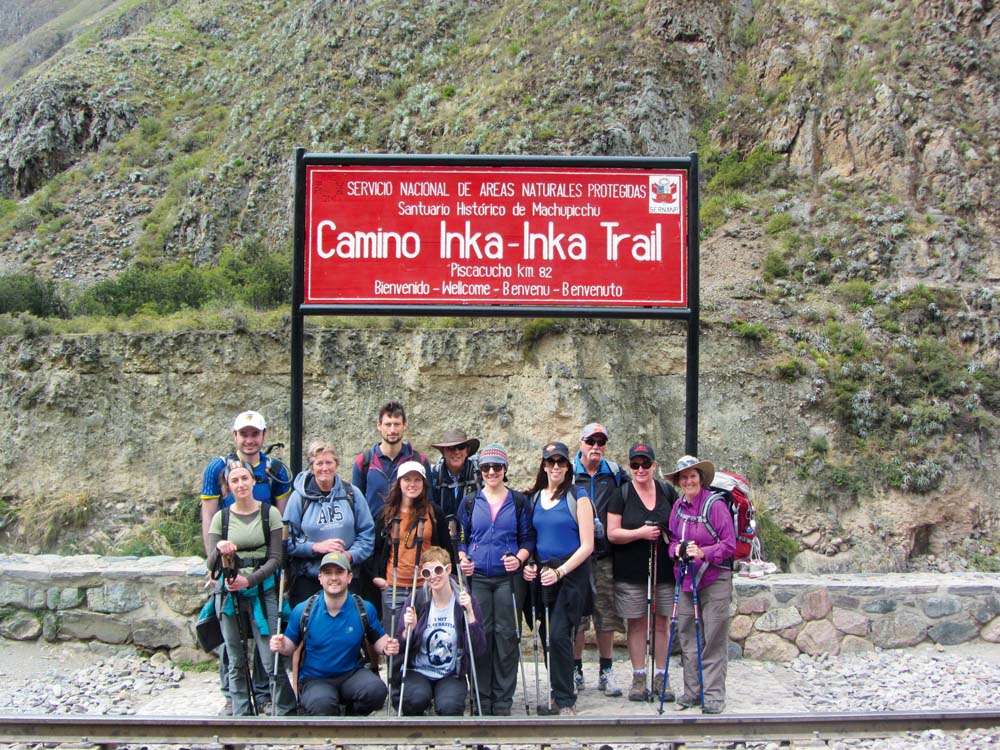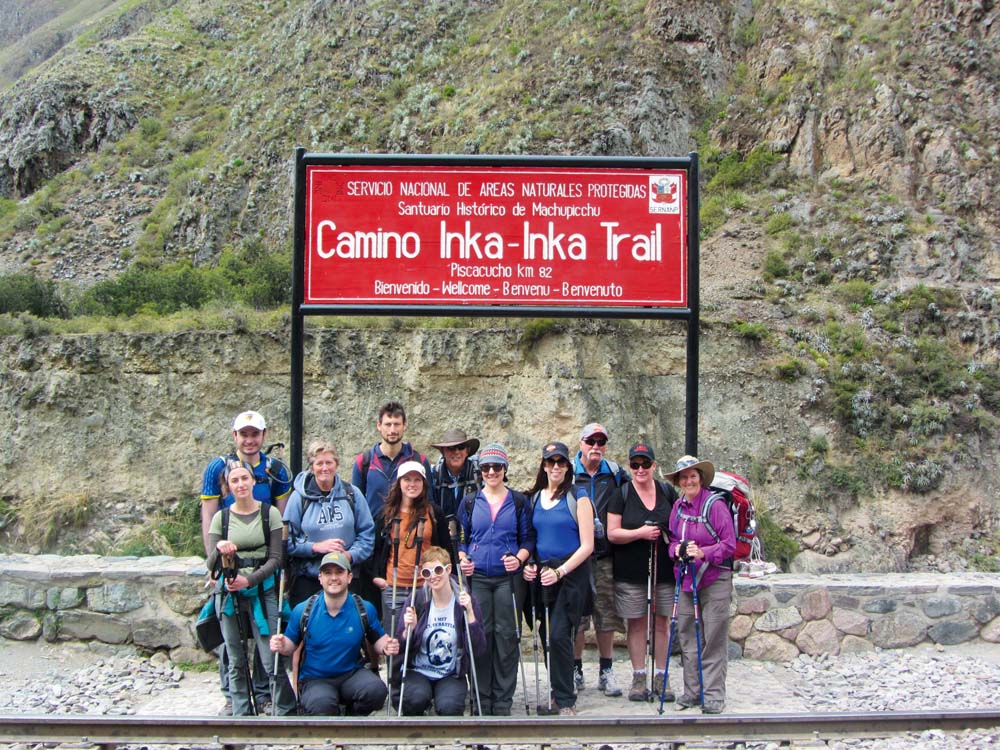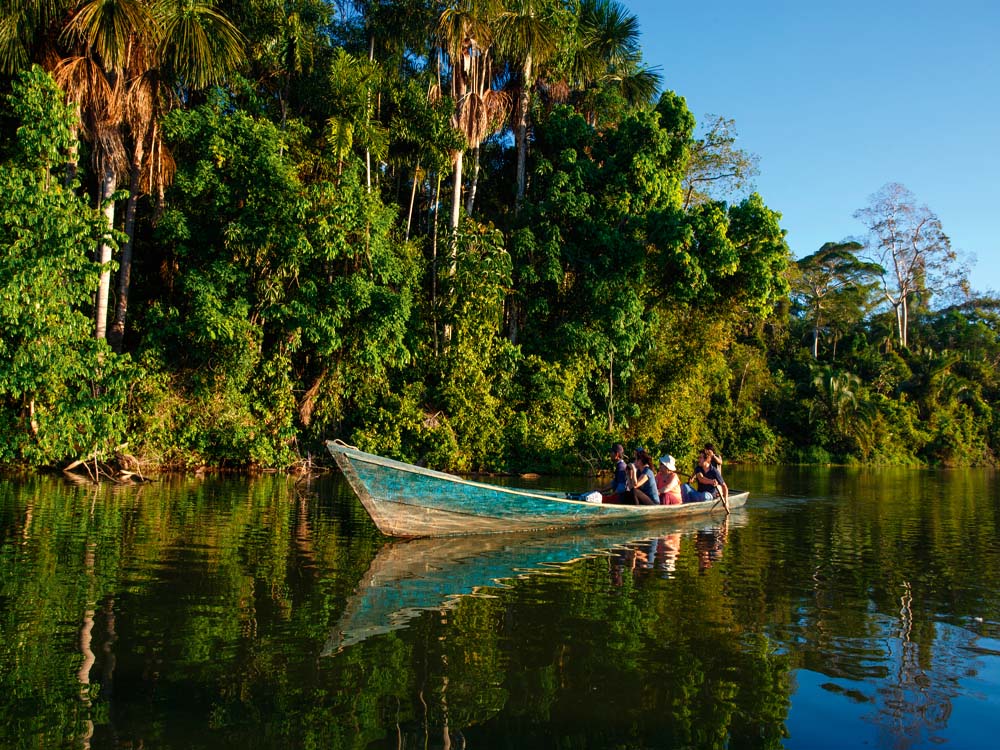The Big Trip: Machu Picchu, Peru
Joining a group tour to tackle Peru's mighty Inca Trail, Martha Hayes has an unexpected adventure on her way to Machu Picchu

Joining a group tour to tackle Peru's mighty Inca Trail, Martha Hayes has an unexpected adventure on her way to Machu Picchu
Joining a group tour to tackle Peru's mighty Inca Trail, Martha Hayes has an unexpected adventure on her way to Machu Picchu
'We're all here for different reasons but no one's doing this for fun.' The immortal words of our Peruvian tour leader, Victor, resound across the snow-capped Andes. You're damn right, I think, as he gives us a how-to-use-the-toilet 'demo' that seems to be some sort of reward for reaching the first campsite of our four-day, 43km trek along the Inca Trail.
And why have I signed up for South America's most famous and indisputably challenging trek, which culminates in Machu Picchu, the fabled 'Lost City of the Incas' (that 1,177,308 tourists visited last year alone)? This is an endurance test, not a holiday, surely? If you can get the train there, why walk? I'm not hugely fit, and on the day before we leave, while my boyfriend and fellow-traveller Chris goes to buy some sensible ‘trekking’ trousers, I slip out for a quick mani-pedi...
There's ten in our group, all Australians save for an Italian girl and us stalwart Brits. Many are in my just-post-30 age group and a few quite a lot older. It's a friendly bunch, escorted by an exuberant local guide, Ara. Charging through the streets of Lima we take in everything from the grand Convento de San Francisco to the arty Chabuca Granda Boulevard, where aspiring poets compete for space with street vendors selling picarones (sweet potato and pumpkin doughnuts) and arroz con leche (rice pudding). It's a whirlwind intro to Peru and a perfect ice-breaker before we fly up to the World Heritage site and historic Inca empire capital of Cusco.

On your marks: Martha (front row, kneeling) and her group get ready to tackle the Inca Trail
Set near the Urubamba Valley of the Andes, Cusco is 3,400m above sea level, so it's no surprise travellers pause here to get used to the altitude. The finish point of Machu Picchu is down at 2,430m, so we're effectively doing some of the hard work before even starting (or so I keep reminding myself).
Celebrity news, beauty, fashion advice, and fascinating features, delivered straight to your inbox!
As a stranger to such great heights, I avoid alcohol and sip coca leaves in hot water (which taste like spinach). But altitude affects everyone in different ways, and I feel nauseous, my legs turn to jelly and merely walking down the stairs leaves me out of breath.
Luckily, Cusco is a cool, vibrant and fascinating place. Incan civilisation dates back to between 1438 and 1533, before the Spanish Conquest, but Cusco only evolved from quiet colonial city to international tourist attraction after Machu Picchu was discovered on Hiram Bingham's archaeological expedition of 1911. Tucked in a highland valley, it couples spectacular views of the Andes with impressive surviving Inca architecture, which we get a closer look at when Ara's friend Ernesto ('as in Oscar Wilde') takes us on a haunted walking tour through the stone-paved streets of the main square, Plaza de Armas. He's got a long way to go with his ghost storytelling, but his efforts - accompanied by an iPod playing scary music - are nothing short of charming. And that's Cusco all over. One minute you're ordering colourful platters of exquisite Japanese-inspired ceviche (it's all about fusion in the city's more contemporary restaurants), then the next you're being swept down the street by a line of carnival dancers (and llamas) in traditional Peruvian dress.
We shop up a storm at a local factory selling everything from silver rings to baby alpaca-wool jumpers, and chill out with incredible freshly-squeezed juices (mango, sweet potato, cacao and ginger? Britain, you've got a long way to go). At the Calle del Medio bar our new best friend, owner Carlos, lets Chris 'sample' an array of potent pisco infusions. Over a game of Jenga, he tells us about his upcoming art exhibition and vision for the contemporary Cusco 'scene' – and it's so inspiring, almost I forget what I'm actually doing here.

Convenience store: stalls along the trail offer refreshments to trekkers © stefanhellberg.com
Acclimatisation officially over, we make a painful 4.45am start. Once we arrive by bus at the Inca site of Ollantaytambo everyone's in jovial spirits, stocking up on last minute supplies and joking how unfit we are. Oh, how we'll laugh... Only 500 people are allowed on the trail per day (200 of which are trekkers) and it's all brilliantly organised. Our group is accompanied by 17 porters and two chefs who carry our bags, pitch the tents and cook meals.
I have high hopes for Day One. It may be 13km but in terms of the whole trail, this is the flat, 'easy' bit. And it is breathtaking (in the best possible way). I can totally understand why the Inca Trail is rated in the top five treks in the world. The mountain scenery is so captivating; the lush cloud forests so majestic, you can zone out and be at one with yourself, or relish the company (and support) of strangers when needed. But I wouldn't call manoeuvring over temperamental Inca paving stones (however flat) easy. Regular stop-offs (including a wholesome three-course lunch of homemade guacamole and pumpkin soup followed by marinated chicken and vegetables) are rewarding but also completely necessary. That night, we're aching but relieved to reach the campsite. And then, just as I'm basking in our glory, I suddenly start to feel very sick…
After a restless sleep, endless trips to the makeshift toilet and plenty of hugs from a lovely Australian couple old enough to my parents, (and sweetly assuming that role), I'm feeling weak and pathetic. I don't know whether it's altitude sickness or something more serious, but when you're this high up and on the other side of world, that's pretty scary. I watch the group tuck into a hearty breakfast while Victor puts me on a strict diet of dry bread and fluid-replacing electrolyte drinks. We've got a steep 14km (including five hours uphill) ahead. This guy knows his stuff; he's done it 440 times. I'm not going to argue.

Peak viewing: it's a struggle to reach Machu Picchu, but worth it © PromPerú/Pilar Olivares
They don't call it 'Dead Woman's Pass' (Warmiwanusqa) for nothing. The toughest physical challenge of my life passes in a blur of tears, laughter and alpaca photo-ops against a unique soundtrack of Jeanette (my new Australian 'mum') belting out Jersey Boys' hits in an attempt to lift my spirits. It's not even lunchtime when we reach the highest point of the trek (over 4,200m), which is as exhilarating as it is moving, with everyone giving into their emotions as they place stones on the top of the mountain in memory of loved ones. This is the kind of perspective-gaining life-experience I had hoped for. But what follows, is very different...
As we prepare for the descent towards the second night's campsite, it's not just the ancient ruins that are heading dramatically downhill. I start to be very sick and my stomach is refusing everything. Dizzy, weak and exhausted, the decision is taken by our porters to carry me the remaining three-and-a-half hours. A small multi-coloured crocheted scarf is transformed into a makeshift swaddle and up I go, on to the back of Theodoro, our supremely talented chef. He and two others take it in turns. It's raining, they're sweating, my stomach's churning, and we don't speak the same language, but a mutual sense of determination gets us through.
Feeling no better the next morning, it's decided I should be piggy-backed (a further four-and-a-half hours) into Machu Picchu town to see a doctor. I'll spend the third night in a hotel with Chris before getting the bus to join the group at the famous finishing point the following morning. I'm devastated. I did not go on this 'journey' to take the bus, and watching the sunrise from Intipunku (the Sun Gate) before making the final steps down the mountain was what I was most looking forward to. However, on arrival the next morning, freshly showered, fed ('chicken diet' soup is all that's on the menu) and medicated (a bacterial infection, the doctor concludes) I feel differently.
Bus-loads of 'day' tourists aside, Machu Picchu is truly magnificent, whether you trek there or not. The sun is shining, the landscape is picture-perfect and there are immense ruins to explore. Victor makes a lively guide as he fills in the gaps in our knowledge and shows us pictures of the porter who completed the entire Inca Trail in just three hours, 45 minutes (yes, really).

Jungle queen: rivers provide the best way to explore the Peruvian Amazon © stefanhellberg.com
After returning to Cusco by train (a superbly scenic ride), I volunteer to skip the congratulatory banquet of cuy (the local delicacy of guinea pig served in the middle of a table like a roast dinner). The next day it's all change as we take a half-hour flight down the eastern flank of the Andes to Puerto Maldonado, deep in the Peruvian Amazon. The hot and humid jungle more than makes up for anything I’ve missed. From a refreshing boat ride up the Tambopata River to our home for the remaining two nights, Cayman Lodge, to a thrilling night trek bursting with butterflies, bats and tiny frogs, it's just what the doctor ordered.
Even a five-hour hike deep into the jungle at 6am the following morning feels rejuvenating. There is so much to explore and enjoy, including creepy caimans and even creepier capibaras (giant guinea pigs) emerging from muddy banks. There's also time for Chris and I to relax in a hammock big enough for two, reward for what has certainly been an endurance test. While I may not have the same sense of 'achievement' as the others, what I've experienced - the sheer, unending kindness of strangers - feels like a far greater discovery.
Book now
Geckos Adventures (0808 274 5901; geckosadventures.com) offers an 11-day 'Un Poco Peru' group tour from £1,480 per person. This includes visits to Lima and Cusco, a four-day Inca Trek, two nights in the Amazon jungle at Puerto Maldonado, guides, transport, sightseeing, some meals and accommodation mixing hotels, lodges and camping. Tours operate year round, the mountains are driest from April to October.
International flights are extra – Iberia (iberia.com) flies from London Heathrow to Lima via Madrid, from £716 return.
Peru (£15.99, Lonely Planet) is a comprehensive guide, useful websites are peru.travel and machupicchu.org.
Lead image © PromPerú/Renzo Giraldo